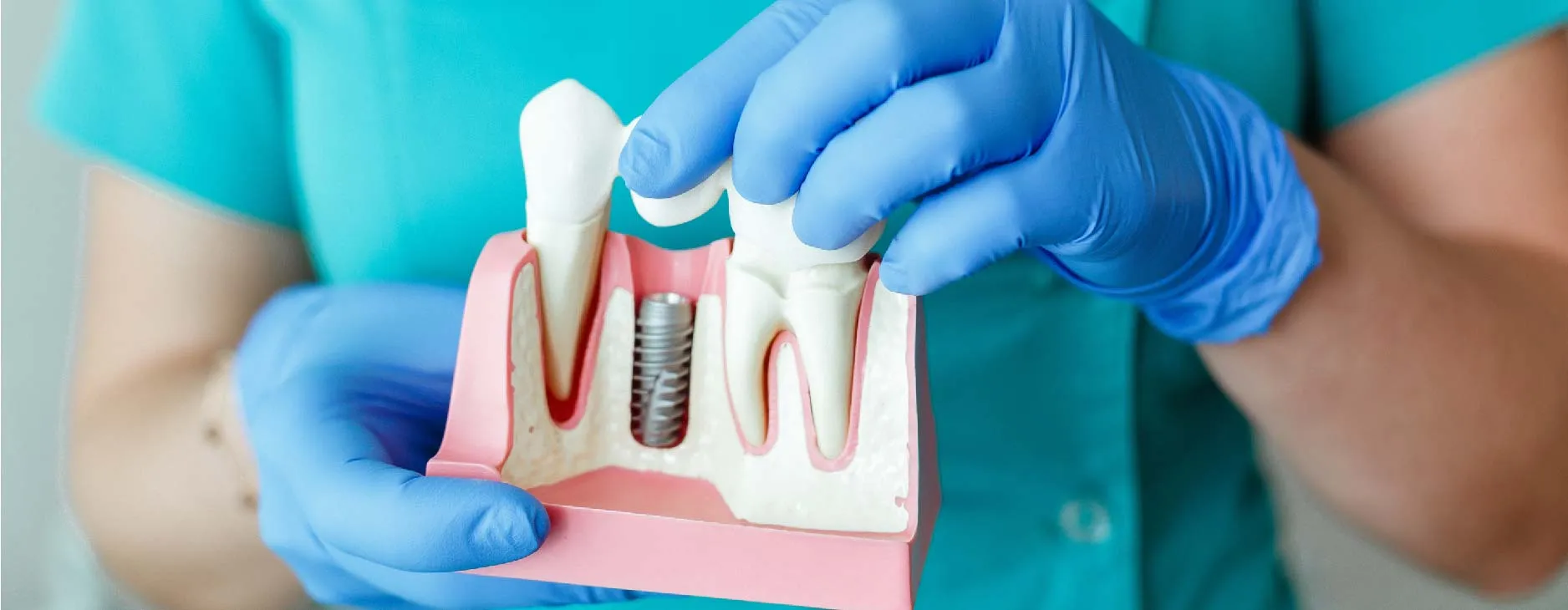Dental implantology has justifiably proven its worth over the past few years. Today, the dental implant is the therapeutic alternative of choice in cases of tooth loss.
However, one question often arises among our patients: “How many dental implants can be placed in a single session?” It is entirely understandable to be eager to regain your smile, but it is equally important to recognize that physiological limits must be respected. In this article, you will find the various factors that influence the maximum number of implants that can be placed per appointment.
Implantation Techniques
Depending on the interval between tooth extraction and implant placement, we distinguish three implantation techniques:
1. Immediate Technique: Immediate Loading of the Implant
Immediate loading involves placing a dental implant into the extraction socket immediately after tooth removal. This technique offers significant advantages for the patient:
- The waiting time is reduced;
- It is less traumatic since fewer surgical interventions are required;
- It has been validated and approved to yield success rates equivalent to conventional techniques.
However, not every case is suited to immediate loading—factors such as bone quality and absence of infection must be carefully evaluated. Thorough planning is therefore essential. A detailed clinical and radiological assessment is performed beforehand to determine feasibility.
2. Intermediate Technique: Early Implant Placement
Early placement consists of inserting an implant shortly after extraction, but not immediately. This approach allows a brief healing period during which the socket undergoes initial repair and any potential infection is resolved. Early placement strikes a balance between the speed of immediate loading and the caution of conventional placement. It is often chosen when immediate loading is contraindicated but an accelerated timeline is still desired.
3. Conventional Technique
The conventional technique follows a more traditional schedule: implants are inserted into the jawbone after a substantial healing period following extraction (approximately 6 months). This method allows complete extraction‐site healing and optimal osseointegration before implant placement. Although it lengthens the overall treatment, it is a reliable, widely used technique with excellent long‐term success rates. Conventional placement is generally chosen:
- When significant healing is necessary;
- When the patient presents medical‐dental conditions requiring a more cautious approach (e.g., bone deficits or immune disorders).
How Many Implants Can Be Placed at Once: Understanding the Recommendations
In general, there is no consensus on the number of implants that may be placed in a single session. Depending on the technique, as many implants as deemed necessary and feasible by the treating dentist or surgeon can be placed:
Single Implants
For patients missing only one tooth, a single implant is usually recommended. This ensures precision and optimal healing around the implant site. When implant sites are independent or far apart in the mouth, the final decision to place all implants on the same day rests with the dentist, who will prioritize the patient’s comfort and well‐being during and after the procedure.
Multiple Implant Placement
When several adjacent teeth are missing, the dentist may recommend a fixed bridge supported by multiple implants (one or two implants at each end). The required number depends on the extent of tooth loss and the desired outcome. In most cases—and when clinical conditions allow—implant‐supported bridges are placed in the same session.
Full-Arch Rehabilitation
Also known as All-on-4 or All-on-6, full-arch rehabilitation replaces an entire dental arch with a fixed prosthesis supported by a minimal number of implants. This approach maximizes stability while minimizing implant count. For complete edentulism, the dentist typically treats one arch at a time—meaning 4 to 6 implants per session, per arch. Temporary prostheses are fabricated so you can maintain an attractive smile between appointments.
Factors Influencing Single-Session Implant Placement
Oral Health Status
The primary consideration is the patient’s overall oral health. Those with healthy gums and no active inflammation are generally better candidates for multiple implants in one session.
Bone Density
Adequate bone density is crucial for implant success. The jawbone serves as the implant foundation, and advanced imaging (e.g., CT scans) is used to assess bone quality and volume. Higher bone density can support a greater number of implants.
Medical History
The patient’s medical background plays a key role. Conditions such as diabetes or autoimmune disorders can affect healing, influencing how many implants can safely be placed at once.
Conclusion
Ultimately, the number of dental implants that can be placed in one session varies by patient. A comprehensive evaluation of oral health, bone density, and medical history is essential to determine the optimal treatment plan. Consulting a qualified dentist is crucial for personalized solutions and reliable implantology outcomes. The decision on simultaneous implant placement is the result of a collaborative process that balances patient needs with clinician expertise.
Sources Narang, S., Narang, A., Jain, K., & Bhatia, V. (2014). Multiple immediate implants placement with immediate loading. Journal of Indian Society of Periodontology, 18(5), 648–650. Rattanapanich, P., Aunmeungtong, W., Chaijareenont, P., & Khongkhunthian, P. (2019). Comparative Study between an Immediate Loading Protocol Using the Digital Workflow and a Conventional Protocol for Dental Implant Treatment: A Randomized Clinical Trial. Journal of Clinical Medicine, 8(5), 622. Testori, T., Weinstein, T., Scutellà, F., Wang, L., & Zucchelli, G. (2018). Implant placement in the esthetic area: Criteria for positioning single and multiple implants. Periodontology 2000, 77(1), 176–196.


















































